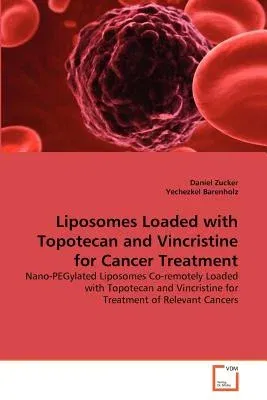Daniel Zucker
(Author)Liposomes Loaded with Topotecan and Vincristine for Cancer TreatmentPaperback, 23 August 2011

Qty
1
Turbo
Ships in 2 - 3 days
In Stock
Free Delivery
Cash on Delivery
15 Days
Free Returns
Secure Checkout
Print Length
136 pages
Language
English
Publisher
VDM Verlag
Date Published
23 Aug 2011
ISBN-10
3639378504
ISBN-13
9783639378504
Description
Product Details
Authors:
Book Format:
Paperback
Country of Origin:
US
Date Published:
23 August 2011
Dimensions:
22.86 x
15.24 x
0.81 cm
ISBN-10:
3639378504
ISBN-13:
9783639378504
Language:
English
Location:
Saarbrucken
Pages:
136
Publisher:
Weight:
208.65 gm

